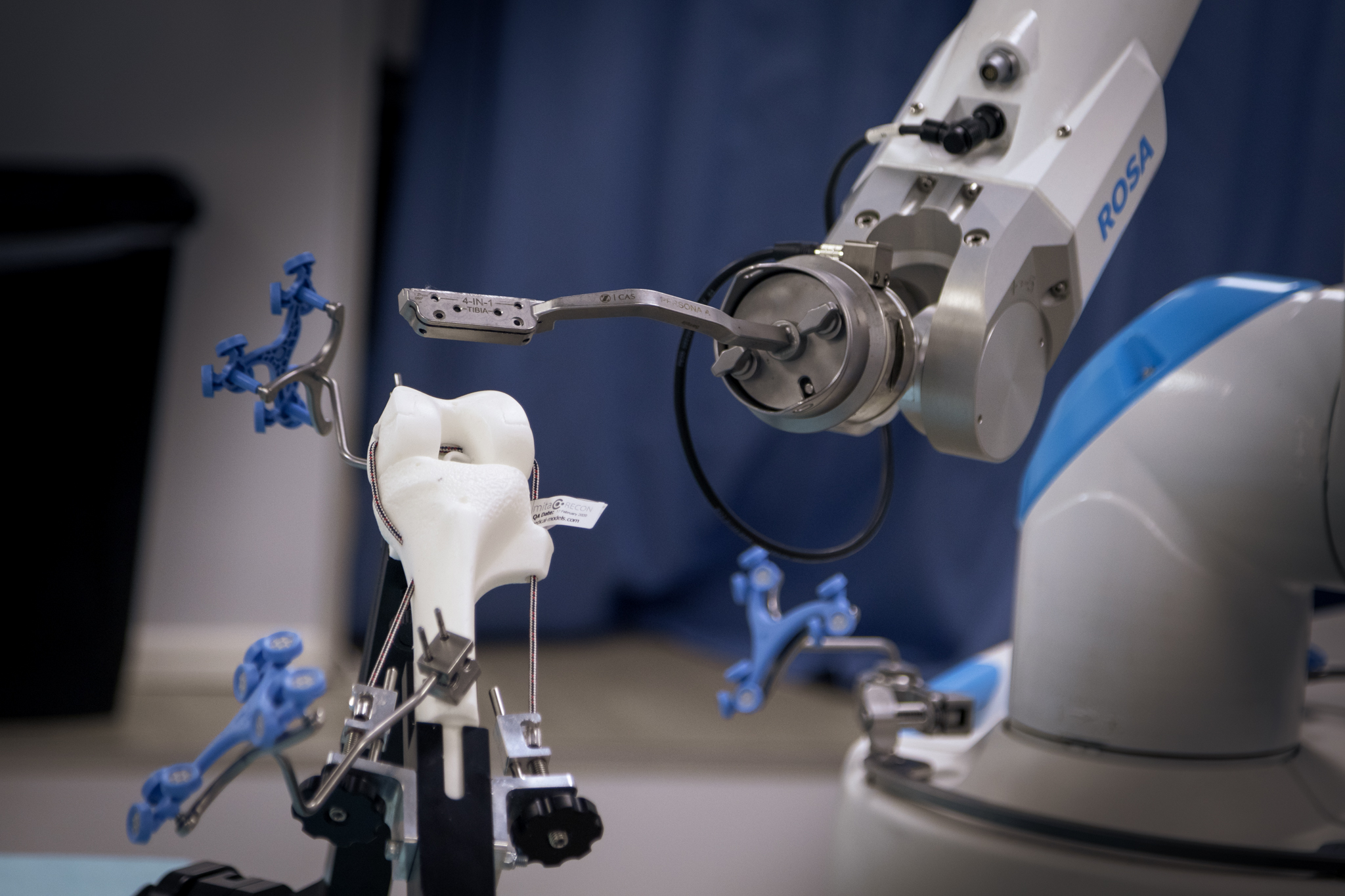
If your knee is severely damaged due to arthritis or injury, it may be hard for you to perform simple activities such as walking or climbing stairs. You may even have pain while sitting or lying down. When nonsurgical treatment options like medications and therapy are no longer helpful, you may want to consider total joint replacement surgery. Total knee replacement can relieve pain and help you resume normal activities.
Treatment for a complex joint
The knee is one of the largest and most complex joints in the body. The knee joins the femur (thigh bone) to the tibia (shin bone). The smaller bone that runs along- side the tibia (fibula) and the patella (kneecap) are the other bones that make up the knee joint. The knee is surrounded by numerous ligaments and tendons that help with movement and stability.
Osteoarthritis
The most common disease affecting the knee joint is osteoarthritis (OA). It is a wear and tear condition that destroys joint cartilage. Sometimes as a result of trauma, repetitive movement, or for no apparent reason, the cartilage wears down, exposing bone ends. Cartilage destruction can result in painful bone on bone contact, along with swelling and loss of motion.
You may experience the following:
- Joint pain
- Inflammation
- Stiffness
- Progressive functional limitation
- Ultimately severe disability
Knee replacement procedure
There are four basic steps to a total knee replacement procedure:
- Prepare the bone: damaged cartilage at the ends of the femur and tibia bones are removed as well as a small amount of bone.
- Position the implants: The cartilage and bone that is removed is replaced with metal components that recreate the surface of the joint.
- Resurface the patella: The underside of the kneecap (patella) is cut and resurfaced with a plastic component.
- Insert a spacer: A plastic spacer is inserted between the metal components to create a smooth gliding surface.
Video provided by:

